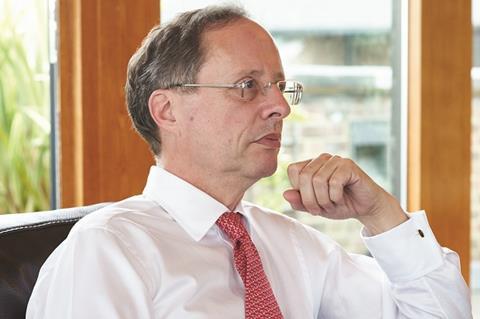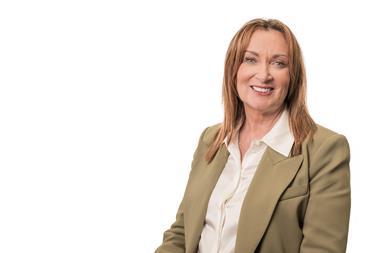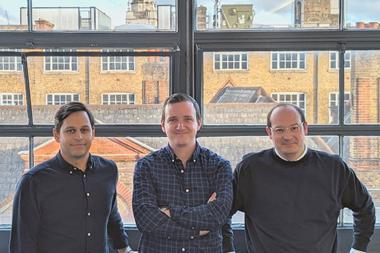GRP has just bought its latest broking hub and promises more acquisitions in the pipeline
“There is no limit to our ambition.”
So says David Margrett (pictured), chief executive of broking consolidator Global Risk Partners.

He’s laughing as he says it; but he’s only half joking.
“That’s probably the wrong way to put it; but we believe that there’s significant scope for us to continue the progress we’re making,” he adds.
“We’re not quite four years old, and I’m quite pleased with the progress we’re making and the management team is as well. It’s been an eventful period for us and we’ve got a good strong pipeline of businesses that we’re interested in, going forward.”
Margrett is speaking about an expansion that has seen GRP shoot up the rankings of this year’s Insurance Times Top 50 Brokers from 33rd place to 20th; with its brokerage income rising by 81% to £65.6m for the year to July 2017, fuelled partly by growth in its Lloyd’s broking businesses but chiefly through acquisitions of regional brokers.
How high would Margrett like to see GRP go in the rankings?
“We don’t sit there and say we’d like to be number three or number four,” he says.
“We certainly think that is out of our grasp, but we do believe we can continue the growth that we’ve shown in the last three years.
And, in the year that Marsh became the first – and so far only – broker to break the £1bn barrier for UK broking revenue, GRP has stated its aim is to achieve £1bn of gross written premium by the end of 2018, principally through acquisition. Is that achievable?
“With the progress we’ve made, that’s still a realistic ambition,” says Margrett.
“But we won’t sacrifice the quality for the quantity. We want to make sure we get the right deals. We regularly walk away from businesses that don’t fit our profile, and we regularly walk away from brokers that aren’t making money for their underwriters and providing decent product levels for their clients,” he adds.
“I don’t think we’re particularly wedded to any premium target, but that was certainly seen as being realistic.”
Currently, GRP’s GWP is “just north of £400m”.
“But our momentum is building and, as we’ve now got our hubs and spokes beginning to develop, we’re seeing more bolt on acquisition opportunities through those larger regional entities so we would expect to see good progress in the coming 12 months,” Margrett says.
“And as we look at the regional retail brokers, we do believe there’s a lot of further activity for us there that will suit the vendors and indeed our profile of wanting to find profitable businesses – profitable not just in their own right, but profitable to the insurers that they trade with because we want to make sure that our preferred partners see a future in a relationship with us and with the clients that we’re offering the products to.”
GRP’s network of regional hubs overseeing smaller spokes is nowhere near complete.
GRP’s current regional hubs comprise Marshall Woolridge in Leeds, Abbey Bond Lovis in Northern Ireland, Green Insurance Group in Surrey, and Higos in Somerset.

These hubs act as the focal point for GRP’s acquisitions of local brokers in each region. In August, Marshall Woolridge made its first regional acquisition, buying Sheffield-based firm ECS Insurance Brokers.
Higos, itself bought by GRP only back in February, made its second acquisition in July of Bridgewater-based firm Colin Fear Insurance Services.
Green was bought by GRP in June this year and promptly in July made its first acquisition of specialist marine broker Collidge & Partners.
While the group currently has no ambitions in Wales or Scotland, there is plenty of room for growth in the rest of England, and it is actively pursuing acquisition candidates.
“We’ve got Northern Ireland, we’ve got Yorkshire, we’ve got the Southwest and the Southeast. We’re interested in filling out the south and the other major gaps,” Margrett says.
“We have some people that we’re heavily engaged with,” he adds.
Margrett gives no details who the targets might be, but he outlines the kind of firm and the kind of owner GRP is looking for, and how it works after acquisition.
“We look to find a business that we can use as a platform and then work with the management team: and in the bigger deals we want the management to have an ongoing financial interest in the business,” he says.
“We then work with them through the provision of acquisition targets or help them to negotiate the targets that they identify locally.
“Higos is a good example of that,” he says.
“Ever since we bought them they’ve been doing transactions and you’ll see a few more in the coming weeks. We parachute in and help Ian Gosden with those whenever he needs support, whether it’s financial or management negotiation or legal support.
“It’s a model we’ve got up and running and now we’ve got the momentum we wanted, we’re very excited about it.”
There’s been plenty of mergers and acquisitions activity in the broking arena over the past couple of years. Does GRP find itself locking horns with rival consolidators or private equity investors over the acquisition of a juicy broker?
“There’s no main concentration of competition,” says Margrett.
But when a likely candidate puts itself up for sale, GRP may encounter rivals window shopping.
“There are some regional private equity investors, and some of the bigger regional brokers themselves have been using bank debt and private investors to try and consolidate some local distribution.
“We occasionally bump into each other,” he admits.
“Inevitably, as we’re seeing more and more vendors using advisors, in the early stages there are usually several participants; but it typically finds itself going down quite rapidly,” he says.
“We’re not particularly interested in some of the things our competitors are, we’ve got a very clear idea of what fits and what doesn’t.
“We have slightly different target operating models. Brendan [McManus] and PIB have been very disciplined about what they are going after, and we try to be as well.
“Given that there’s still roughly 3,000 brokers out there for us all to go after there’s plenty of hunting ground for us.”
There have been a lot of angry words over the past year from insurers complaining that consolidators are trying to push up broking commissions.
Things came to a head in May when Aviva cancelled its agency with GRP’s Yorkshire hub Marshall Woolridge.
Aviva had previously vowed to strike back against what it claimed were brokers who were incentivised to transfer business away to other insurers who offered higher commissions.
But Margrett insists his aim is to conduct business for the benefit of all parties involved.
“We have a very strong and stable panel of insurers,” says Margrett.
“We’re looking to make sure that everyone has a fair slice of the pie, and we’re very keen to make sure that where we do have a partnership with an insurer that they’re happy with the level of profitability that they can expect from our portfolio. But we expect to be rewarded for the distribution that we bring.
“There are always negotiations, but we try not to fall out with people. We’re mostly focused on making sure that they can see a stable outlook for their own underwriting on our book, and as long as we can get that level of pricing for them, we wouldn’t expect to fall out over our brokerage levels.
“People should concentrate on getting their pricing right, and then everybody’s happy.”
So what’s next for GRP?
Continued growth through acquisition, according to Margrett.
“More of the same, but with a bit more momentum now that we’ve got the level of support that we have,” he says.
“You should expect a few more deals in the coming weeks.
“We’ve got a number in due diligence and in the final throes of completion, and we’re very excited about the prospect, so we’re hoping to continue our progress up your league table.”






































No comments yet